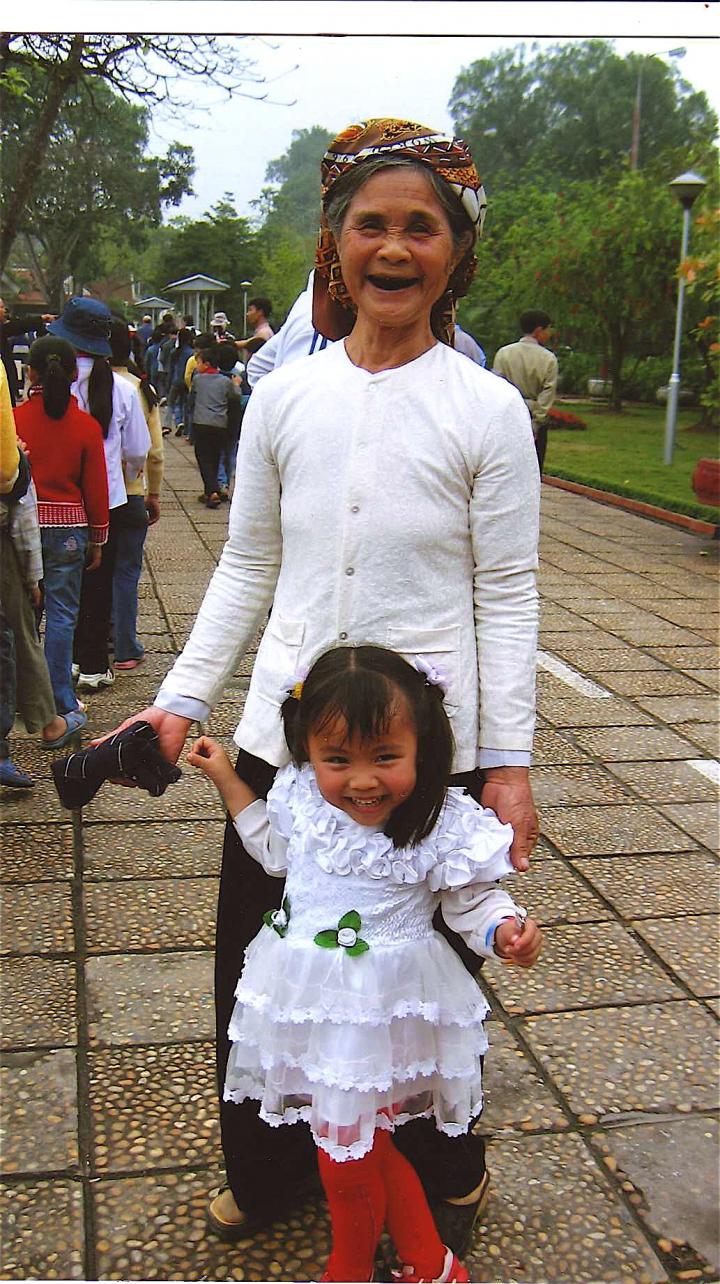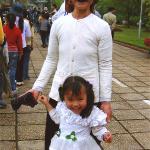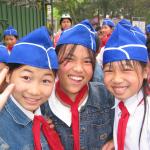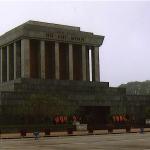Visiting Uncle Ho
"Hello! How are you? I am fine." A cacophony of simple English phrases flooded our ears while around us swirled a moving wave of blue, white and red clad children. The smiling excited faces of dozens of Vietnamese youngsters looked up at us with curiousity. They were all dressed in their Young Pioneer uniforms. Young Pioneers is the junior organization of the Communist Party.
We were visiting Ho Chi Minh's mausoleum in Hanoi. As we approached the entry gate to the park that surrounds the final resting place of the 'father of Vietnam' several school buses pulled up letting out a wave of children. They had come to the city from the surrounding countryside to visit their revered leader's grave. Excited to see Western faces they immediately swamped us practicing the few English phrases they knew.
A few minutes later we joined the line that snaked across the courtyard in front of the mausoleum and several blocks down the street. The majority of the visitors were elementary school children with their teachers, but quite a number of grandparents had also brought their young grandchildren to see the man who finally freed their country after nearly a hundred years of foreign occupation. It was clear this was an important occasion for these senior citizens. They had dressed their grandkids in their best outfits and the women had blackened their teeth and wore colorful headscarves, a sign this outing was something special.
At first some of the children were dancing about and singing but as we approached the tomb the line grew orderly and quiet. At one station I was asked to leave my purse and then just before we entered the marble room where the body lay I was asked to surrender my camera and was given a tag to retrieve it later. No photo flashes are allowed to disturb the somber atmosphere of the mausoleum. As soon as we entered the inner sanctum a total hush came over the crowd as if they had just come into a holy place. Men removed their hats. Parents silently held their young children high so they could see properly. Guards stood at each of the four corners of the marble slab where the glass coffin lay. These soldiers carried large guns with bayonets. Their faces were expressionless. Huge beautiful wreaths of fresh flowers scented the room. Ho Chi Minh's embalmed corpse looks almost real; one can imagine he is still breathing. Interestingly before his death in 1969 he specifically requested that his body not be preserved and put on display. He asked to be cremated and his ashes spread in different places across his beloved Vietnam. His wishes were ignored and he now lies in perpetual state in a large building erected in the exact spot in the Hanoi square where he first read Vietnam's Declaration of Independence in 1945.
There is a museum about his life nearby and of course the inevitable souvenir shops where one can buy Ho Chi Minh statues, mugs, fridge magnets, post cards, T-shirts, pens and books. The park around the mausoleum is very well kept and lovely. It contains more than two hundred different trees and flowers from various parts of Veitnam.
The Vietnamese people fondly refer to Ho Chi Minh as Uncle Ho. The little brochure they give you as you enter the mausoleum says that all generations of Vietnamese hold this man in high esteem because he wanted to build a peaceful, prosperous and united country. Although not everyone may agree with Ho Chi Minh's policies or his violent tactics for changing Vietnam, it is certainly clear when visiting his final resting place that he remains a big hero in his home and native land.
* * * * *
 ThingsAsian
ThingsAsian



















